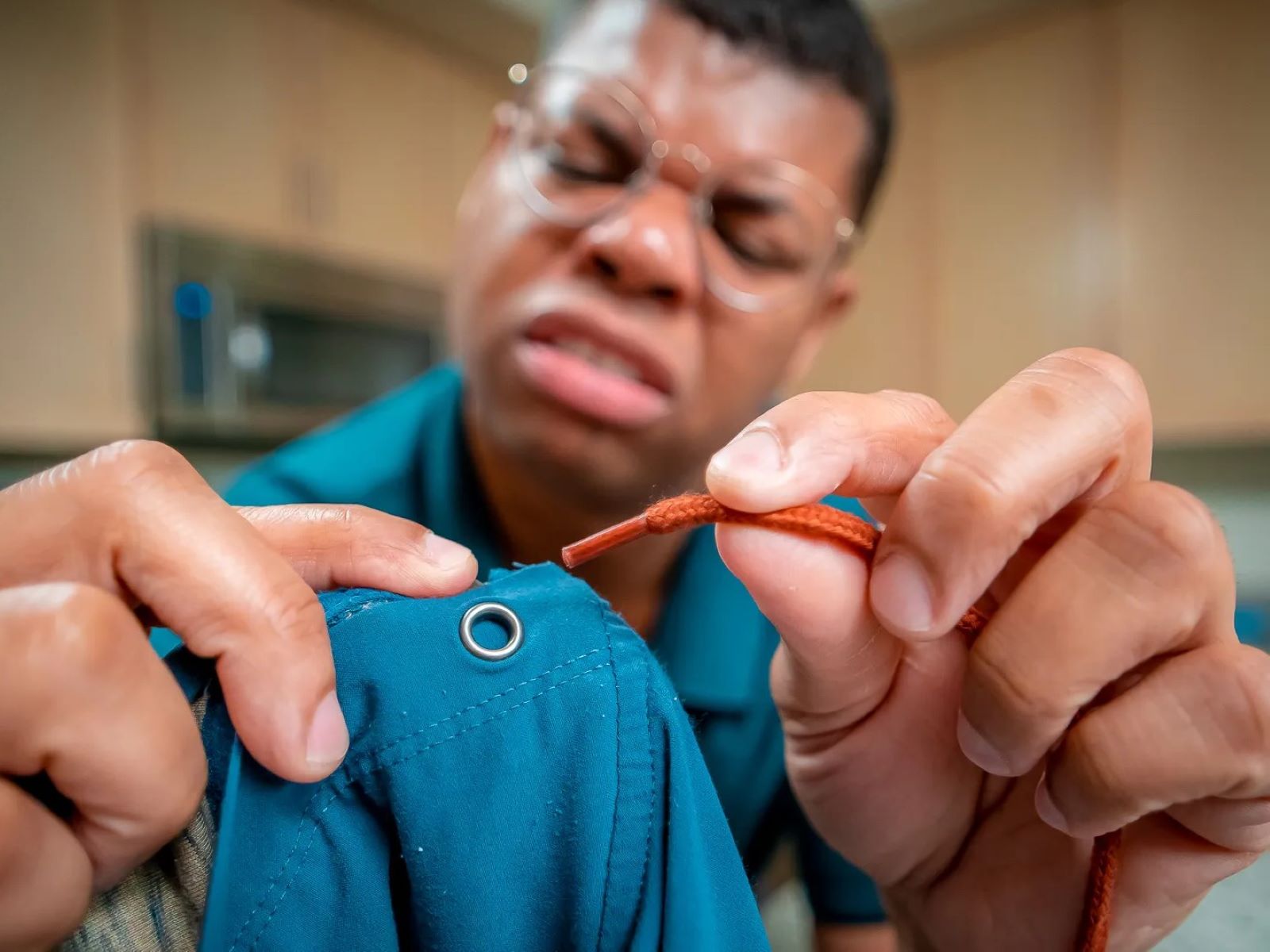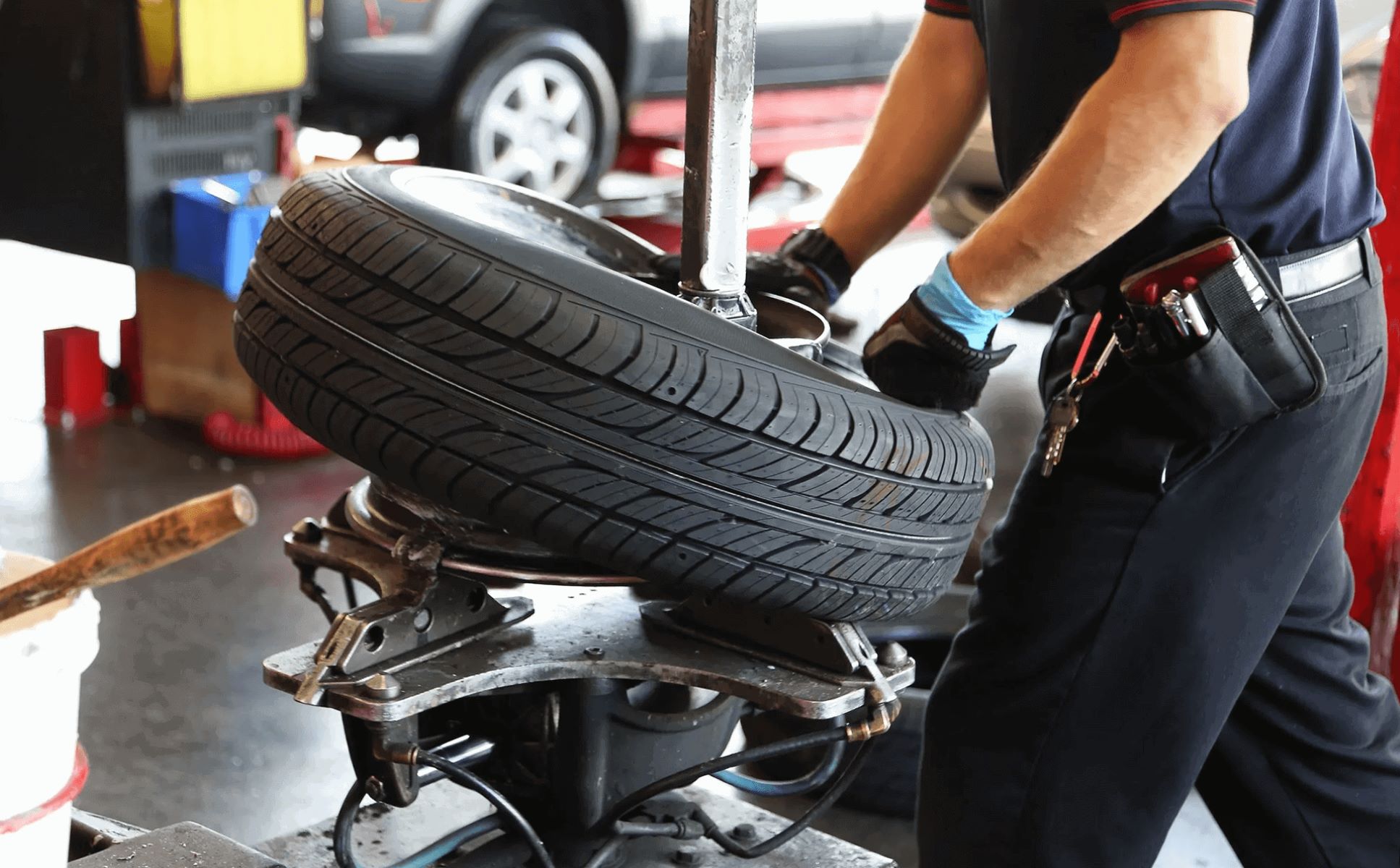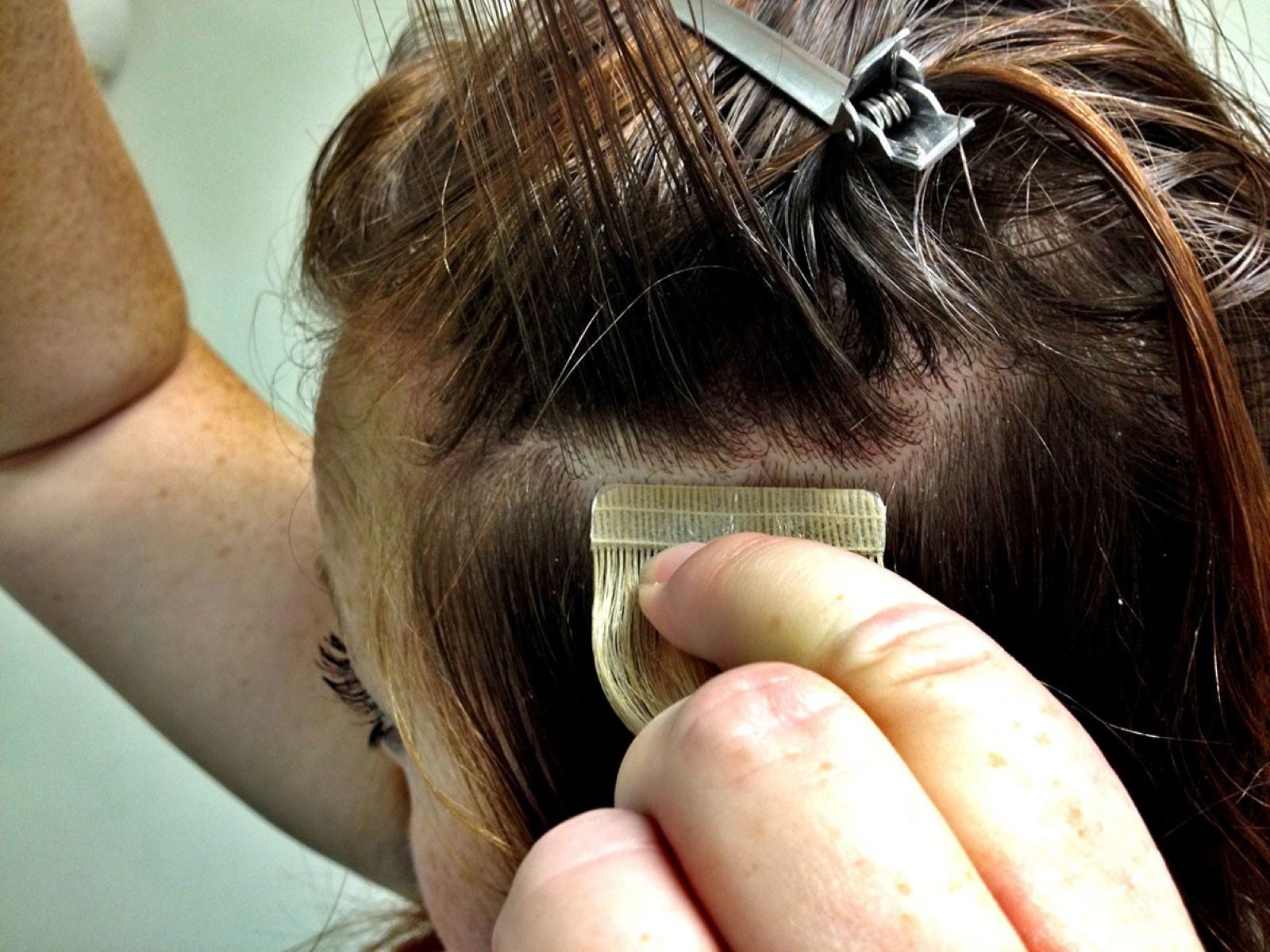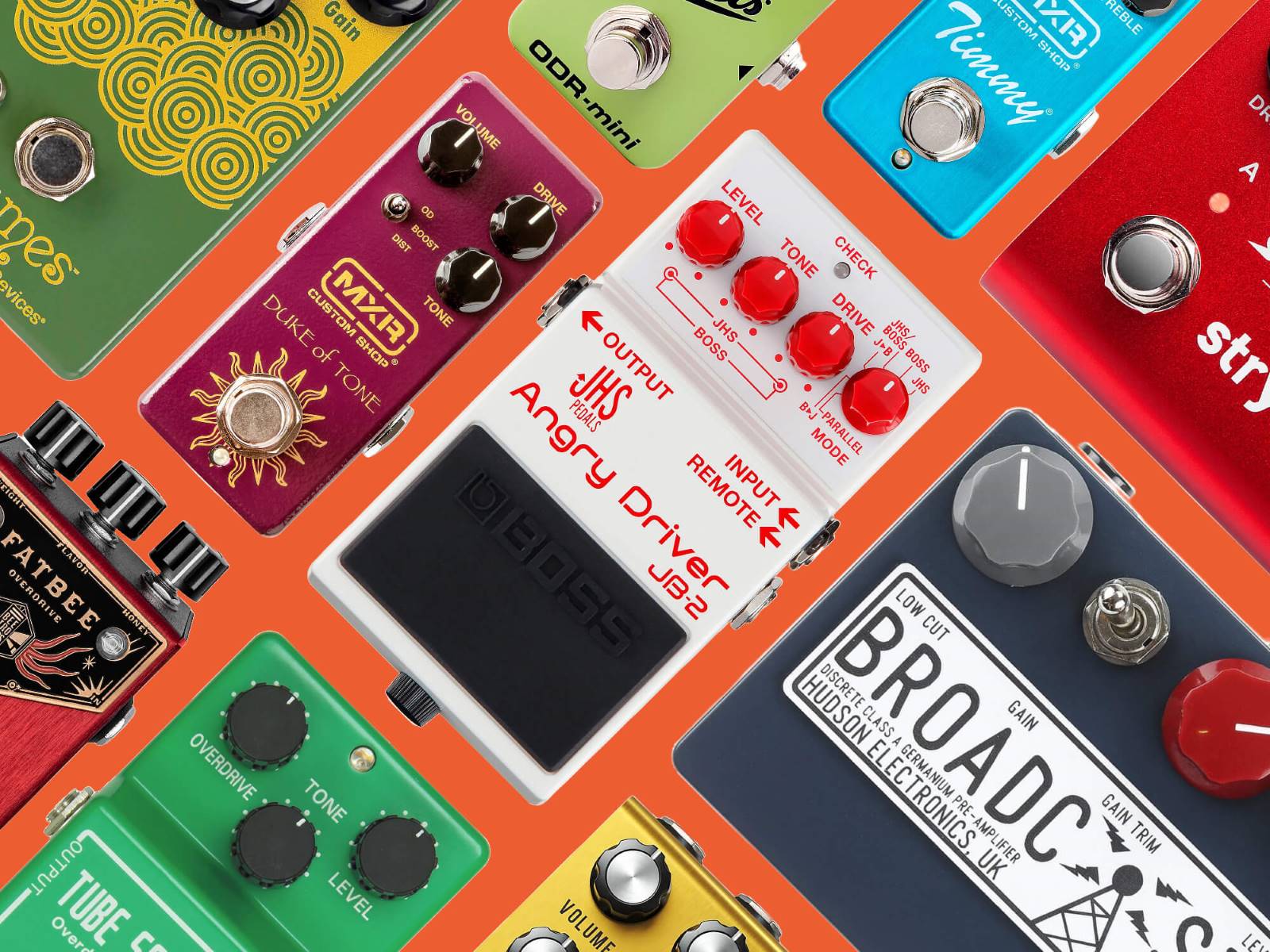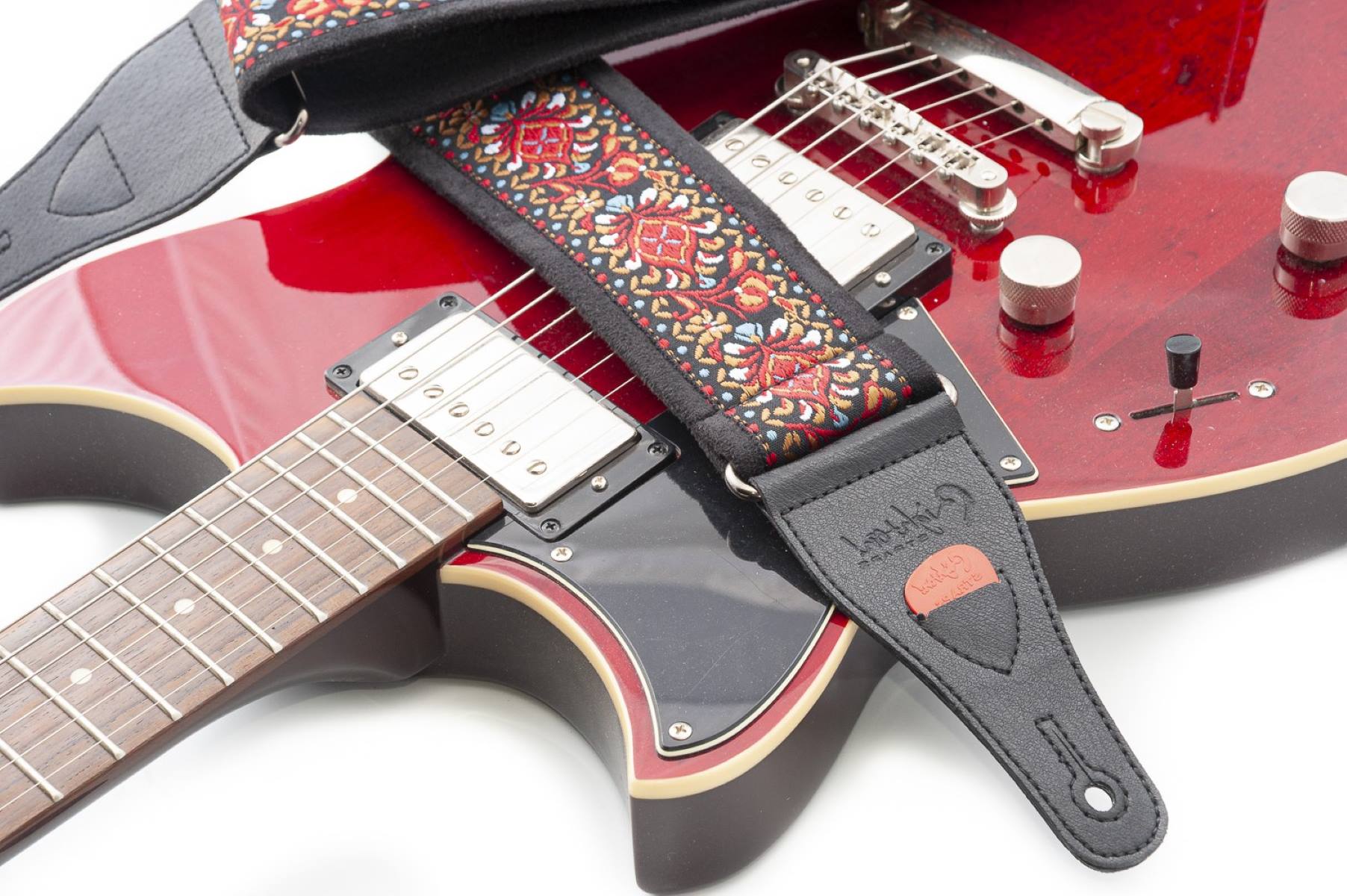

Music
How To Put On A Guitar Strap
Published: February 26, 2024
Learn how to properly put on a guitar strap and play your favorite tunes with ease. Get expert tips and techniques for securing your guitar strap. Perfect for music enthusiasts!
(Many of the links in this article redirect to a specific reviewed product. Your purchase of these products through affiliate links helps to generate commission for Regretless.com, at no extra cost. Learn more)
Table of Contents
Introduction
Putting on a guitar strap may seem like a simple task, but it's an essential skill for any guitarist. Whether you're a beginner or a seasoned player, knowing how to properly attach and adjust your guitar strap is crucial for comfort, playability, and safety. A well-fitted strap not only supports the weight of the guitar but also allows for better posture and freedom of movement while playing. In this guide, we'll walk you through the step-by-step process of putting on a guitar strap, from choosing the right strap to ensuring a secure and comfortable fit.
A guitar strap is more than just a functional accessory; it's an extension of your personal style and can contribute to your overall stage presence. With a wide range of materials, designs, and lengths available, selecting the right strap is a decision that reflects your individual taste and playing preferences. Whether you prefer a classic leather strap for its durability and timeless appeal or a vibrant, patterned fabric strap to make a bold statement, the options are virtually endless. Understanding the factors to consider when choosing a guitar strap will help you find the perfect match for your instrument and playing style.
Once you've selected the ideal strap, the next step is to attach it to your guitar securely. This involves identifying the appropriate attachment points on your instrument and ensuring that the strap is fastened in a way that provides stability and support. Additionally, adjusting the length of the strap to achieve the desired playing position is crucial for both comfort and performance. Finally, testing the strap to ensure that it feels secure and allows for unrestricted movement is essential before taking the stage or practicing for extended periods.
By mastering the art of putting on a guitar strap, you'll not only enhance your playing experience but also demonstrate a fundamental understanding of guitar maintenance and performance preparation. So, let's dive into the details of each step to ensure that you can confidently and comfortably wear your guitar strap for any musical endeavor.
Read more: How To Put On Cufflinks
Step 1: Choosing the Right Strap
Selecting the right guitar strap is a crucial decision that goes beyond mere functionality. It is an opportunity to express your personal style and enhance your stage presence. When choosing a guitar strap, several factors come into play, including material, width, length, and design. Understanding these elements will help you find a strap that not only complements your instrument but also provides the comfort and support you need during performances and practice sessions.
Material
Guitar straps are available in a variety of materials, each offering distinct advantages. Leather straps are renowned for their durability, classic aesthetic, and ability to distribute the weight of the guitar evenly. They are a popular choice among many guitarists for their timeless appeal and long-lasting quality. On the other hand, fabric straps, such as nylon or cotton, offer a lightweight and customizable option. These straps often feature vibrant colors, patterns, and designs, allowing you to showcase your personality and make a visual statement while performing.
Width
The width of a guitar strap plays a significant role in distributing the weight of the instrument across your shoulder. Wider straps provide greater surface area, which can help reduce shoulder fatigue during long playing sessions. They are particularly beneficial for heavier guitars or bass instruments. Conversely, narrower straps offer a sleek and minimalist look, making them a preferred choice for players seeking a more understated appearance. Consider your comfort preferences and the weight of your guitar when deciding on the width of the strap.
Length
The length of the strap determines how the guitar sits against your body while playing. It's essential to choose a length that allows you to maintain a comfortable and ergonomic playing position. Adjustable straps are versatile and allow you to customize the length to suit your preferences. Whether you prefer a higher, tighter position for precise fretwork or a lower, relaxed position for strumming and rhythm playing, the length of the strap can significantly impact your playing comfort and technique.
Read more: How To Tighten Bra Straps
Design
Guitar straps come in a myriad of designs, ranging from simple and understated to bold and eye-catching. Consider your personal style and the image you wish to convey on stage when selecting a design. Whether you opt for a classic, monochromatic strap to complement a traditional aesthetic or a vibrant, intricately patterned strap to make a statement, the design should reflect your individuality and enhance your overall stage presence.
By carefully considering the material, width, length, and design of the guitar strap, you can find a perfect balance of functionality and style. The right strap not only supports your instrument but also becomes an extension of your musical identity, allowing you to perform with confidence and comfort.
Step 2: Attaching the Strap to the Guitar
Attaching the guitar strap to your instrument is a crucial step that ensures stability and security while playing. Most guitars feature two strap buttons—one located at the base of the body and the other at the top of the neck joint. These buttons are specifically designed to accommodate the attachment of a guitar strap. Here's a detailed guide on how to attach the strap to your guitar securely:
-
Locate the Strap Buttons: Identify the strap buttons on your guitar. The button at the base of the body is typically located near the bottom edge, while the button at the neck joint is situated on the upper side of the body, near the heel of the neck.
-
Attach the End Pin: Begin by attaching one end of the strap to the strap button at the base of the guitar body. The majority of guitar straps are equipped with a leather or fabric end pin that loops around the strap button. Ensure that the attachment is secure and that the strap hangs freely without twisting.
-
Secure the Upper End: With the lower end of the strap in place, proceed to attach the upper end to the strap button near the neck joint. Carefully loop the end pin around the button, ensuring that it is fastened tightly to prevent any slippage during play.
-
Check for Stability: Once both ends of the strap are securely attached to the guitar, gently tug on the strap to confirm that it is firmly in place. It's essential to verify the stability of the attachment to prevent any unexpected detachment while playing.
-
Ensure Proper Alignment: As a final check, ensure that the strap is aligned correctly and that it does not twist or tangle. The strap should hang evenly on both sides of the guitar, allowing for balanced weight distribution and comfortable playability.
Attaching the guitar strap properly is essential for maintaining the safety and integrity of your instrument. By following these steps, you can ensure that your guitar strap is securely fastened, providing the support and stability you need for confident and enjoyable performances.
Remember, a securely attached guitar strap not only enhances your playing experience but also contributes to the overall safety and longevity of your instrument. With the strap firmly in place, you can focus on making music without any concerns about the security of your guitar.
Step 3: Adjusting the Length of the Strap
Once the guitar strap is securely attached to the instrument, the next step is to adjust its length to achieve the desired playing position. Properly adjusting the length of the strap is essential for maintaining comfort, posture, and playability while performing. Whether you prefer a higher, tighter position for intricate fretwork or a lower, relaxed position for rhythmic strumming, finding the optimal length is crucial for a seamless playing experience.
To adjust the length of the guitar strap, follow these steps:
-
Evaluate Playing Position: Before making any adjustments, consider the playing position that best suits your style and technique. Experiment with different strap lengths to determine the ideal height at which the guitar sits against your body. This process involves finding a balance between comfort, accessibility to the fretboard, and overall playing posture.
-
Utilize Adjustable Features: Many guitar straps are equipped with adjustable features that allow you to customize the length according to your preferences. These may include buckle systems, sliding mechanisms, or additional strap holes. Take advantage of these features to fine-tune the length of the strap to your exact specifications.
-
Test for Comfort and Accessibility: Once you've made adjustments to the strap length, test it by playing the guitar in various positions. Pay attention to how the instrument feels against your body and assess whether the strap length facilitates smooth and unrestricted movement across the fretboard. Ensure that the adjusted length allows for comfortable wrist and arm positioning while playing.
-
Consider Body Size and Playing Style: It's important to consider your body size and playing style when adjusting the strap length. Taller individuals may require a longer strap to accommodate their height, while shorter players may prefer a shorter length for better control and maneuverability. Additionally, the playing style, whether standing or seated, can influence the optimal strap length for maximum comfort and performance.
-
Seek Feedback and Make Fine Adjustments: If possible, seek feedback from fellow musicians or bandmates regarding your playing posture and comfort with the adjusted strap length. Their observations and input can provide valuable insights for making fine adjustments to ensure an optimal playing experience.
By carefully adjusting the length of the guitar strap, you can tailor it to your specific playing preferences, allowing for a comfortable and ergonomic playing position. Whether you're performing on stage, practicing at home, or recording in the studio, a well-adjusted strap contributes to an enjoyable and seamless playing experience.
Remember, the goal of adjusting the strap length is to find a balance between comfort, accessibility, and playing posture. With the strap set to the perfect length, you can focus on expressing your musical creativity with ease and confidence.
Step 4: Testing the Strap for Comfort and Security
After attaching and adjusting the guitar strap, it's essential to thoroughly test it for both comfort and security. This step ensures that the strap not only supports the weight of the guitar but also allows for unrestricted movement and a comfortable playing experience. Here's a detailed guide on how to test the strap to ensure optimal comfort and security:
-
Weight Distribution: Begin by standing or sitting with the guitar strapped on. Pay attention to how the weight of the instrument is distributed across your body. The strap should provide balanced support, preventing the guitar from feeling excessively heavy on one side. If you notice any discomfort or uneven weight distribution, consider readjusting the strap length or position to achieve a more balanced feel.
-
Shoulder and Back Comfort: Assess how the strap feels on your shoulder and back. It should rest comfortably on your shoulder without digging into your skin or causing any strain. Additionally, ensure that the back of the guitar, where it makes contact with your body, feels secure and stable. If there is any discomfort or instability, make necessary adjustments to the strap to alleviate pressure points and enhance overall comfort.
-
Mobility and Range of Motion: Test the strap by moving around and playing the guitar in various positions. Check for any restrictions in your range of motion and ensure that the strap allows for fluid movement across the fretboard. Whether you're playing intricate solos or strumming chords, the strap should facilitate unrestricted mobility, enabling you to play with ease and confidence.
-
Security Check: Perform gentle movements and light tugs to verify the security of the strap attachment to the guitar. Ensure that the strap buttons and end pins hold the weight of the instrument without any signs of slippage or instability. It's crucial to have full confidence in the strap's ability to securely support the guitar during vigorous playing without any risk of detachment.
-
Extended Playing Test: If possible, wear the guitar with the strap for an extended period, such as during a practice session or rehearsal. This extended test allows you to assess the strap's comfort and security over time. Pay attention to any discomfort, fatigue, or adjustments needed during prolonged use, and make necessary modifications to ensure a comfortable and secure fit.
By thoroughly testing the guitar strap for comfort and security, you can fine-tune its fit to meet your specific needs and playing style. A well-tested strap not only enhances your playing experience but also provides the confidence and reassurance needed for seamless performances and extended practice sessions. With a secure and comfortable strap, you can focus on creating music without any distractions or concerns about the stability of your instrument.
Read more: How To Get Soul Guitar
Conclusion
Mastering the art of putting on a guitar strap is not merely a technical skill; it is an essential aspect of a guitarist's performance preparation and personal expression. Throughout this guide, we have explored the intricacies of choosing the right guitar strap, attaching it securely to the instrument, adjusting its length for optimal playability, and testing it for comfort and security. By understanding and implementing these steps, guitarists can elevate their playing experience and stage presence while ensuring the safety and integrity of their instruments.
Choosing the perfect guitar strap involves a thoughtful consideration of material, width, length, and design. Whether opting for the timeless appeal of a leather strap or the vibrant expression of a fabric design, the chosen strap becomes an extension of the guitarist's individuality and style. This decision not only impacts the instrument's support but also contributes to the performer's visual identity on stage.
Attaching the strap to the guitar is a crucial step that demands attention to detail and precision. By securing the strap to the designated strap buttons and ensuring stability and alignment, guitarists can perform with confidence, knowing that their instruments are securely supported. This step is essential for preventing any unexpected detachment or instability during performances.
Adjusting the length of the guitar strap is a personalized process that directly influences playing comfort and posture. By customizing the strap length to accommodate individual preferences, body size, and playing style, guitarists can achieve an ergonomic and comfortable playing position. This adjustment is pivotal for facilitating unrestricted movement and seamless performance across various musical genres and playing techniques.
Thoroughly testing the guitar strap for comfort and security is the final step in ensuring a seamless playing experience. By evaluating weight distribution, shoulder and back comfort, mobility, and security, guitarists can fine-tune the strap's fit to meet their specific needs. This comprehensive testing process provides the reassurance and confidence needed for extended practice sessions, rehearsals, and live performances.
In conclusion, putting on a guitar strap is not just a practical necessity; it is a reflection of the guitarist's personality, playing style, and commitment to performance excellence. By carefully selecting, attaching, adjusting, and testing the guitar strap, musicians can embark on their musical journeys with the assurance of comfort, security, and individuality. With a well-fitted and securely attached strap, guitarists can focus on what truly matters – creating and sharing their music with passion and authenticity.


